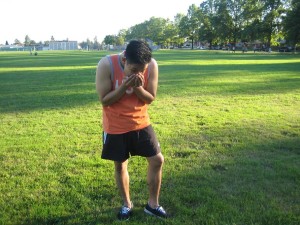It is important to note that air hunger is considered one of the most distressing medical symptoms that anyone can experience. Individuals who do not receive adequate oxygen from the air they breathe usually suffer from this symptom. Oxygen therapy typically involves supplying an increased concentration of oxygen to the lungs to help alleviate the breathlessness. Those who suffer from acute and chronic lung conditions such as pneumonia, COPD and cystic fibrosis as well as those with advanced heart failure are given oxygen therapy. Even though oxygen therapy is safe and effective when used as prescribed, there are side effects that can develop in some individuals that you should be well aware of. You can learn more about this essential therapy by enrolling in a first aid class today.
Nasal irritation
In most cases, an individual is given supplemental oxygen therapy via a nasal cannula which is a flexible plastic tube with prongs that fit into the nose. Over time, the cannula can irritate the nasal lining, thus causing soreness or occasional bleeding. Changing the size or style of the nasal cannula or changing to a face mask can help alleviate the issue for most individuals. A minimal amount of petroleum jelly is applied inside the nose to help alleviate the local irritation.

Reduced respiratory drive
The respiratory center in the brain monitors the level of oxygen and carbon dioxide in the blood. The level of carbon dioxide in the blood acts as the main stimulant for breathing. In some individuals with chronic obstructive pulmonary disease (COPD), the blood oxygen level serves as the main stimulator of the respiratory rate which is a phenomenon called as hypoxic respiratory drive.
Among those who have hypoxic respiratory drive, administration of oxygen can lead to deprived breathing. In most cases, a low concentration of supplemental oxygen can prevent this serious side effect from developing.
Pulmonary oxygen toxicity
When oxygen therapy is administered, it might be too much for the individual. Extended administration of purely concentrated oxygen can damage the lining of the tissues and air sacs in the lungs which is a condition called pulmonary oxygen toxicity. The risk for this side effect of oxygen therapy should be considered when the individual on home treatment increases the flow rate of oxygen to a higher level than prescribed.
It is important to note that the risk of pulmonary oxygen toxicity is highest when the individual inhales pure oxygen for several hours up to days. In most cases, coughing is the initial indication of pulmonary oxygen toxicity. The irritation of the large airways triggered by exposure to concentrated oxygen can instigate this symptom. Prolonged exposure can cause damage to the lung tissues and eventually lead to the leakage of fluid into the air sacs along with progressive shortness of breath.
